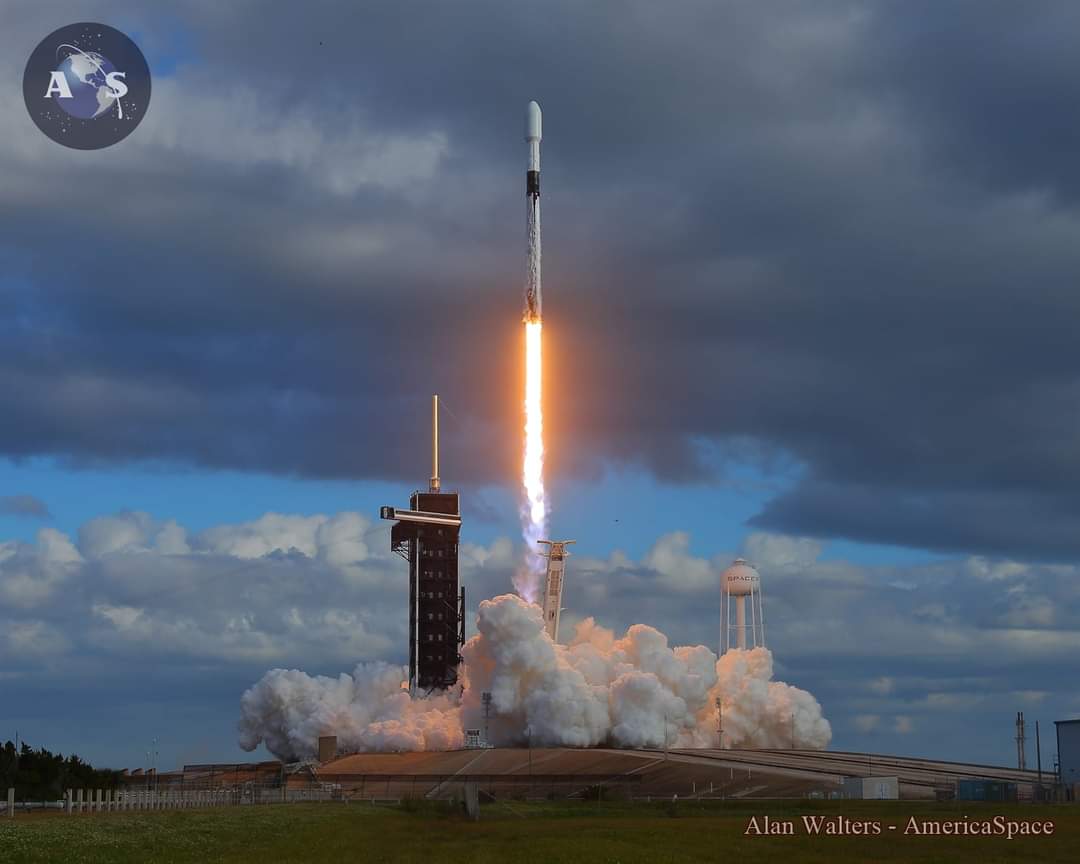
For only the fourth time in as many years, SpaceX has launched a highly secretive payload for the United States’ intelligence community, following Saturday’s 9 a.m. EST liftoff of a previously-flown Falcon 9 core from historic Pad 39A at the Kennedy Space Center (KSC) in Florida.
As well as marking the fourth Falcon 9 to log as many as five launches, the veteran B1059 first stage—which only joined the fleet and made its inaugural voyage last December—becomes the first flight-proven booster to launch a national security payload. And that payload, whose purpose remains shrouded in official silence, was NROL-108 and is being flown on behalf of the National Reconnaissance Office.
Weather for today’s launch were predicted to be highly favorable, with a 90-percent likelihood of acceptable conditions at T-0, diminishing to 70 percent in the event of a 24-hour scrub to Sunday. “On Saturday, winds will become easterly and weaken as the high-pressure center moves north towards the Mid-Atlantic,” noted the 45th Weather Squadron at Patrick Air Force Base in its L-1 briefing on Friday. “These onshore winds will bring clouds that develop over the warmer waters towards the Space Coast. The primary weather concern for an attempt Saturday is cumulus clouds associated with these coastal showers.”
The veteran B1059 core, which becomes only the fourth Falcon 9 booster to log a fifth launch, was trundled out from the Horizontal Integration Facility (HIF) to Pad 39A on Wednesday. First flown in support of CRS-19—a Commercial Resupply Services Dragon cargo mission to the International Space Station (ISS)—in December 2019, B1059 later saw service to loft CRS-20 last March, a batch of Starlink low-orbiting internet communications satellites and a pair of SkySat geospatial imaging satellites for PlanetLabs, Inc., in June, and more recently Argentina’s SAOCOM-1B Earth-resources sentinel in August.
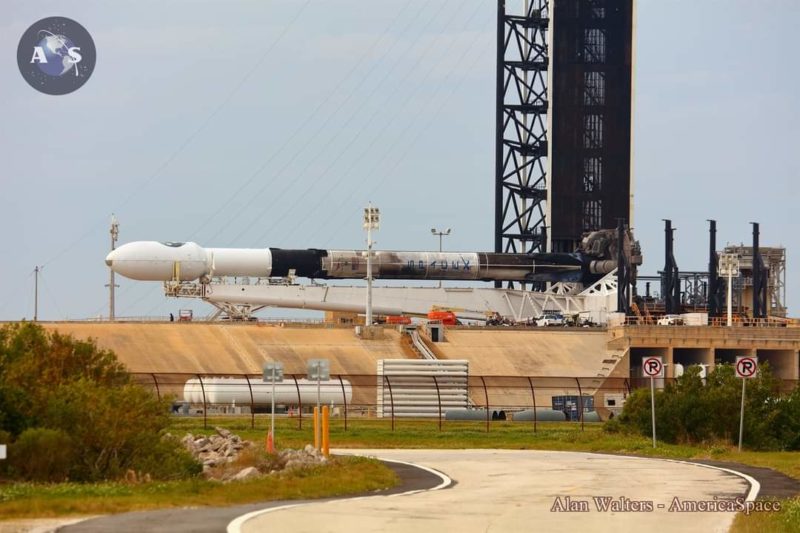
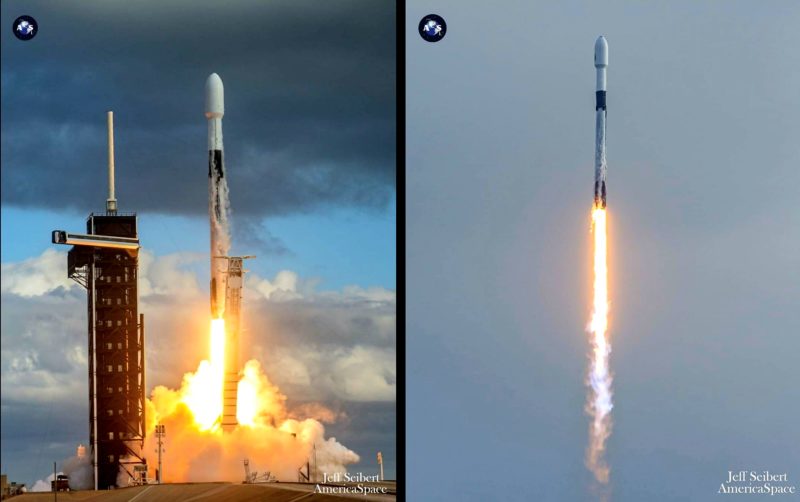
A year ago, when B1059 first flew, no Falcon 9 core had flown more than four times, yet in December 2020 no less than four have now done so. And two of their number have also gone on to fly sixth and seventh missions.
Today’s flight also marked the fourth classified flight by SpaceX and its second in support of the objectives of the National Reconnaissance Office. Back in May 2017, a Falcon 9 launched the highly secretive NROL-76 payload and SpaceX has since lofted the Space Force’s X-37B Orbital Test Vehicle (OTV) mini-shuttle and the classified Zuma mission—presumed lost after a possible failure soon after reaching orbit—in January 2018. Coming up in the first half of next year are a pair of Falcon Heavy missions in support of the Space Force and two more classified NRO payloads in the fall.
NROL-108 was originally set to fly during a three-hour “window” on Thursday, 17 December, with T-0 eventually refined to around 9:45 a.m. EST. Fueling of the 230-foot-tall (70-meter) Falcon 9 proceeded normally and the countdown ran smoothly down to inside two minutes before liftoff.

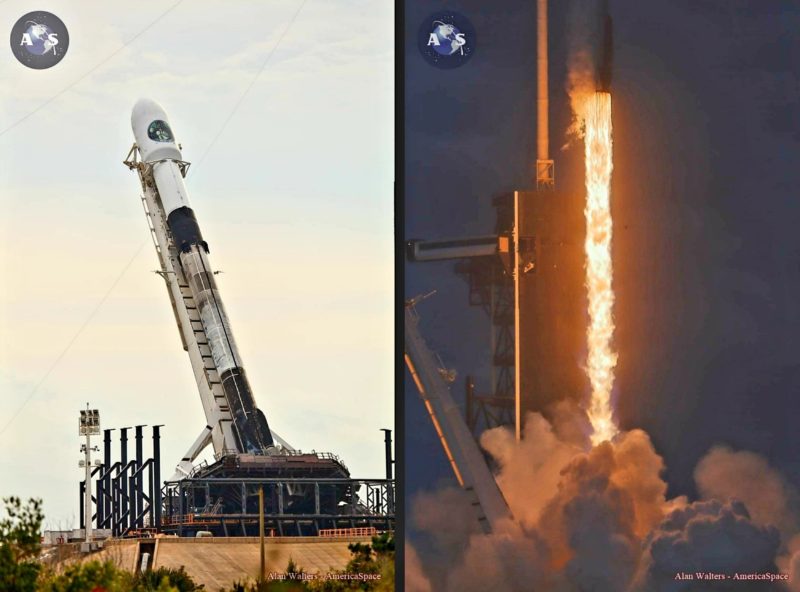
Then, a “hold” call was heard over the countdown net at T-1 minute and 53 seconds, which led to the clock being recycled to T-45 minutes and holding. It later became clear that the hold call was due to an anomalous sensor reading in the booster’s second stage, with slightly higher-than-normal liquid oxygen tank pressures.
SpaceX took the prudent step of standing down, initially hopeful of a 24-hour recycle to Friday. But it was later decided to aim for Saturday instead, “to allow additional time for checkouts”. Liftoff at 9:00 a.m. EST Saturday offered a picture-perfect closure of a spectacular flight manifest for 2020. All told, SpaceX has launched 26 missions using only 11 first-stage cores this year.
Those flights saw the first Falcon 9s log five, six and seven launches, SpaceX’s first-ever four-mission month and broke a 35-year-old record for landing-to-launch turnaround times for an orbital-class vehicle launched from Florida.
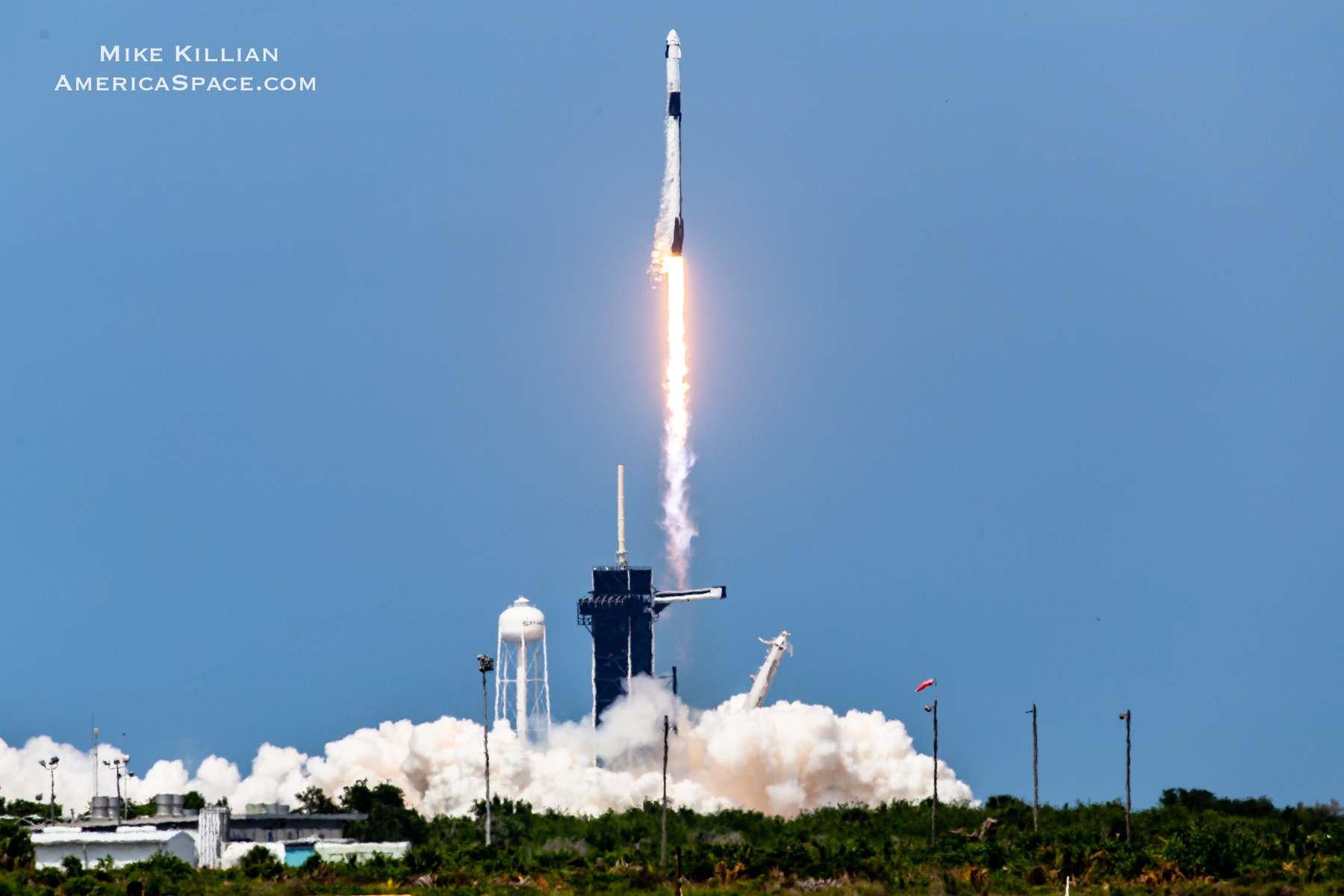
More significantly, they saw Crew Dragon finally rise to full operational service, from a high-altitude In-Flight Abort Test in January to “Bob and Doug’s Excellent Adventure” aboard Dragon Endeavour in the summer and, just last month, the Crew-1 astronauts to expand the ISS to as many as seven long-duration crew members.
Additionally, SpaceX has launched 833 Starlink satellites, two Block III Global Positioning System (GPS) navigation and timing satellites, South Korea’s ANASIS-II military communications satellite, two Cargo Dragons, Argentina’s SAOCOM-1B and the Sentinel-6A Michael Freilich ocean-monitoring satellite. Twenty-six missions represents the greatest number of Falcon 9s ever flown in a single calendar year, eclipsing the 21 launches achieved in 2018.
.
.
FOLLOW AmericaSpace on Facebook and Twitter!
.
.






Interesting to note that SpaceX record launch rate is what NASA once hoped to do with the space shuttle. Admittedly far less complex than shuttle, it’s pleasing to see the Falcon 9 become the American version of Russia’s Soyuz rocket.